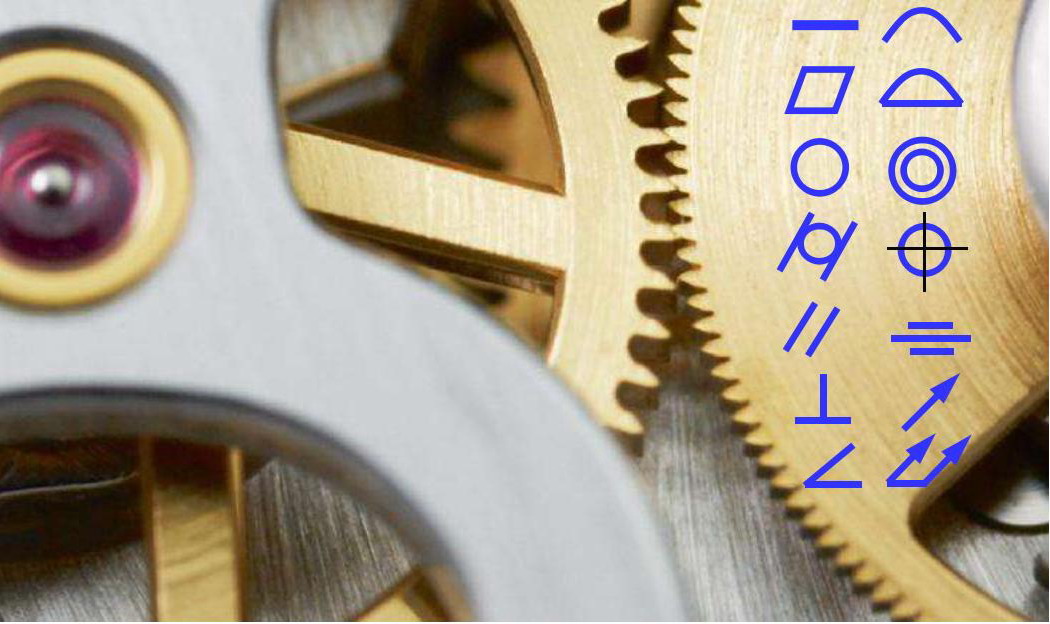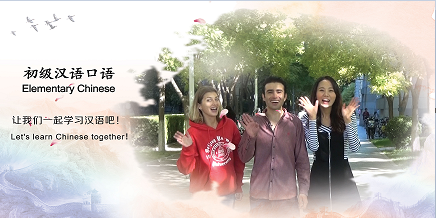
当前课程知识点:Diagnostics in Chinese Medicine > Week 4 Basic Theory of Chinese Medicine 4: The theory of etiologic factor > 4.1 Six exogenous factors > 4.1.2 Nature and pathogenicity of wind and cold
返回《Diagnostics in Chinese Medicine》慕课在线视频课程列表
返回《Diagnostics in Chinese Medicine》慕课在线视频列表
下面我们来具体学习六种邪气风寒暑湿燥火
它们的性质和致病特点
首先
我们来学习第一个风邪
风邪 是指自然界中间
具有风之轻扬开泄 善动不居的特性的这种外邪
风为春季主要气候
所以风邪致病以春季为多
但是 一年四季都会有风
一年四季都可能会受到风邪而导致病变
风邪侵犯人的途径 主要是从皮毛肌腠侵犯人体
风邪的性质和致病特点
主要有以下三个
风为阳邪 其性开泄 易袭阳位
风性善行而数变
风为百病之长
首先
风为阳邪 其性开泄 易袭阳位
其中阳邪是指
风具有轻扬 升散 向上 向外的特性
开泄 是指的风容易使腠理疏泄 开张而出汗
风邪易袭阳位
阳位 主要是在上 在表 在外的部位
比如 在上的头面部
腰背部的阳经部位
或者是体表的肌肤毛发等等
这些部位容易受到风邪侵扰
就会导致上部的头痛
腰背部的身痛
或者是皮肤毛发的汗出恶风等这些症状
风邪的第二个特点是
风性善行而数变
善行 是指的善于行走
风邪致病
具有定位游移 行无定处的特点
比如
以风寒湿三气杂致而引起的痹证
如果见到有
游走性的关节疼痛
疼痛没有固定的地方
中医称之为行痹
因以风为主 所以又称为风痹
数变的数 是快速的意思
数变就是快速的变化
风邪致病
具有发病迅速 变幻无常的特点
比如 风疹
可见皮肤瘙痒 发无定处 此起彼伏的症状
所以我们如果看到这种皮肤病
表现出皮肤瘙痒 发无定处
一会儿前胸 一会儿后背
一会儿上 一会儿下的瘙痒
这种通常可以辨证为风邪引起的病证
要用祛风法进行治疗
风邪的第三个特点是
风为百病之长
这里的百病之长
是指风为六淫之首
六淫 风 寒 暑 湿 燥 火
其中 寒邪 湿邪 燥邪和热邪
都可以依附于风而侵犯人体
形成
风寒之邪 风湿之邪 风燥之邪 风热之邪等等
它们会引起风寒证 风湿证
风燥证和风热证
所以古人说风邪为外感病因的总称
以上是风邪的性质和致病特点
下面我们来学习 寒邪
寒邪是指自然界中间
具有寒冷 凝结 收引特性的外邪
通常以冬天为主要的气候
不过 夏天也可以见到
比如 空调房 或食冷饮等等
寒邪的形成途径主要有五个
比如 冬季寒冷太过
气温骤降
淋雨涉水
汗出当风
空调过凉 等等
都可能会引起寒邪侵入人体
寒邪又分为外寒和内寒
其中外寒从外面感受寒邪
它有两种途径侵犯人体
第一个是伤寒
是指被寒邪所伤
寒邪伤于肌表 郁遏体表卫阳
第二个途径是中寒
是指寒邪直中于里 伤及脏腑的阳气
内寒是指的机体的阳气不足 失去温煦
它会表现出来虚寒象
外寒和内寒虽有区别
但他们之间是相互联系 互相影响的
比如 阳虚内寒的人 很容易感受外寒
而外寒侵入机体 如果积久不散
又会常常损伤人体的阳气 导致内寒
寒邪的性质和致病特点又是什么
主要有以下三个方面
寒为阴邪 易伤阳气
寒性凝滞和寒性收引
首先是 寒为阴邪 易伤阳气
寒是最典型的阴邪 容易损伤人体的阳气
它可以导致人体的阳气不足
使阳气的所有的功能减退
比如 推动 温煦 固摄和气化的作用都会减退
从而使脏腑 经络 气血 津液的功能也会减退
比如
寒邪袭表
它可以阻遏人体的阳气
会导致体表恶寒重 无汗
鼻塞 流清涕
或者是脉浮紧等等
如果寒邪直中内脏
比如 寒邪直中脾胃
会导致脾阳受损 出现脘腹冷痛
吐泻 形寒肢冷等等
或者寒邪直中少阴
就可以导致心肾阳虚
出现恶寒踡卧 手足厥冷
下利清谷 小便清长 精神萎糜 脉微细等等
这些证候
所以寒邪最容易损伤人体的阳气
寒邪的第二个致病特点 寒性凝滞
凝滞是指凝结 阻滞不通
寒性凝滞的致病特点 有两个
寒凝致痛 和 寒凝津阻
寒凝致痛 是指 寒性凝聚
可以导致脏腑经络的气血阻滞
气机闭阻 不通则痛
这种疼痛
是以得温痛减 遇寒痛增的寒痛为特点的
寒凝津阻
是指寒邪伤阳
不仅使经络气血阻滞不通
还可以使津液凝结化为痰饮
所以寒邪引起气血津液阻滞不通
会导致气滞 血瘀 痰凝等等病证
寒邪的第三个致病特点 寒性收引
收引 也就是收缩牵引
寒性收引是指寒邪会导致
肌腠 经络 血脉收缩挛急引起的病变
它的致病特点有三个
寒收腠闭 寒引脉紧 寒引筋急
寒收腠闭 是指寒邪伤表 肌腠闭阻
会导致卫阳被遏
出现体表恶寒 无汗
寒引脉紧 是指寒客血脉
使血脉挛缩 气血凝聚
从而出现头身疼痛 脉紧等等
寒引筋急 是指寒邪损伤经络关节
筋脉收缩拘急
表现为关节屈伸不利 冷厥不仁等等症状
从上面的讲述中 我们可以看出
寒性凝滞 可以引起疼痛
寒主收引 也可以引起疼痛
所以在急性剧烈的疼痛的患者中
除了严重的外伤或者结石阻塞之外
通常都为寒邪所导致的
以上是寒邪的性质和致病特点
本节课 就讲述到这里
-Introductory remark
--QQ groups、WeChat public account
-Introduction
--【Discussion 1】Why do you want to take this course?
-Unit test for Introduction
-1.1 Yin-yang theory
-1.2 The theory of five elements
--1.2.1 The theory of five elements
--1.2.2 Application of the theory of five elements
-Frequently Asked Questions
-Unit test for week 1
-2.0 Outline
--【Discussion 2】How to understand the holistic view centered on the Zang Fu theory?
-2.1 Liver
--【Discussion 3】Why is repose more important than vigorous exercise in recuperation for patients with
-2.2 Heart
-2.3 Spleen
-2.4 Lung
--2.4 Lung
-2.5 Kidney
-2.6 Six fu organs
-Frequently Asked Questions
-Unit test for week 2
-3.1 Qi
--3.1 Qi
-3.2 Blood
-3.3 Body fluid
-3.4 The relationship of qi, blood and body fluid
--3.4 The relationship of qi, blood and body fluid
--【Discussion 4】A discussion about the theory of qi, blood and body fluid
-Frequently Asked Questions
-Unit test for week 3
-4.0 Outline
-4.1 Six exogenous factors
--4.1.2 Nature and pathogenicity of wind and cold
--4.1.3 Nature and pathogenicity of summer heat and damp
--4.1.4 Nature and pathogenicity of dryness and fire
-4.2 Etiology of visceral impairment
--4.2 Etiology of visceral impairment
-Frequently Asked Questions
-Unit test for week 4
-5.0 Outline of inquiry
--【Discussion 5】If you were a patient, how would you describe your condition to your doctor first?
-5.1 Inquiry of Chills and fever
--5.1.1 Chills and fever(Aversion to cold with fever)
--5.1.2 Chills and fever(Chills without fever)
--5.1.3 Chills and fever(Fever without chills)
--5.1.4 Chills and fever(Alternative chills and fever)
--【Discussion 6】How to understand "if you have clinical manifestations of cold, that is exterior syndr
-5.2 Inquiry of perspiration
-Frequently Asked Questions
-Unit test for week 5
-5.3 Inquiring of pain
--【Discussion 7】How to understand "stagnation leading to pain and innourish leading to pain"?
-5.4 Inquiring of head, body, thorax and abdomen
--5.4 Inquiring of head, body, thorax and abdomen
-5.5 Inquiring of ears and eyes
--5.5 Inquiring of ears and eyes
-5.6 Inquiring of sleep
-5.7 Inquiring of food and drink, appetite and taste
--5.7 Inquiring of food and drink, appetite and taste
-5.8 Inquiring of defecation and urination
--5.8.1 Inquiring of defecation
--5.8.2 Inquiring of urination
-5.9 Inquiring of infantile and women's disease
--5.9 Inquiring of infantile and women's disease
-Unit test for week 6
-6.0 Outline of Observation
--【Discussion 8】Please use the whole body inspection (including the expression, complexion and figure)
-6.1.1 Observation of vitality
--6.1.1 Observation of vitality
-6.1.2 Observation of the color
--6.1.2.1 The content, principles of inspection of the color
--6.1.2.2 Indication of diseases by five colors
--【Discussion 9】How do you understand the normal complexion of a normal people?
-6.1.3 Observation of the appearance
--6.1.3 Observation of the appearance
-6.1.4 Observation of figure and posture
--6.1.4 Observation of figure and posture
-Unit test for week 7
-6.2.1 Observation of head and face
--6.2.1 Observation of head and face
-6.2.2 Observation of five sensory organs
--6.2.2.1Observation of five sensory organs(observation of eyes,ears,nose)
--6.2.2.2Observation of five sensory organs(observation of lips,teeth and gums,throat)
-6.2.3 Observation of body
-6.2.4 Observation of limbs
-6.2.5 Observation of two lower orifices
--6.2.5 Observation of two lower orifices
-6.2.6 Observation of skin
-6.3 Observation of excreta
-6.4 Observation of infantile fingerprints
--6.4 Observation of infantile fingerprints
-Frequently Asked Questions
-Unit test for week 8
-7.1 Outline of tongue inspection
--7.1.1 The morphology and structure of the tongue
--7.1.2 The principle of tongue examination
--7.1.3 The method and precaution of tongue examination
--7.1.4 The content of tongue examination, normal tongue
-7.2 Inspection of tongue structure
--7.2.1 Observe the color of tongue
--7.2.2 Observe the shape of tongue
--7.2.3 Observe the states of tongue
--7.2.4 Observation of sublingual vein
-7.3 Observation of tongue coating
--7.3.1 Observation of coating texture
--7.3.2 Observe the color of coating
-7.4 Clinical significance of tongue diagnosis
--7.4 Clinical significance of tongue diagnosis
--【Discussion 10】Why to observe the tongue can be used to diagnose disease?
-Unit test for week 9
-8.1 The principle of pulse examination
--8.1 The principle of pulse examination
-8.2 The regions and methods of pulse examination
--8.2 The regions and methods of pulse examination
-8.3 The elements of pulse examination and the normal pulse
--8.3 The elements of pulse examination and the normal pulse
-8.4 Characteristics and significance of pulse
--8.4.1 Superficial pulse, deep pulse, slow pulse, rapid pulse
--8.4.2 Surging pulse, thin pulse, long pulse, short pulse
--8.4.3 Feeble pulse, forceful pulse, slippery pulse, uneven
--8.4.4 Taut pulse, tense pulse,soggy pulse, moderate pulse
--8.4.5 Knotted, slow-regular-intermittent, irregularly abrupt
-8.5 Similar pulse, concurrent pulse, pulse indicating deterioration of visceral qi۞
--8.5 Similar pulse, concurrent pulse, pulse indicating deterioration of visceral qi۞
--【Discussion 11】Why is complex pulse more common than single-factor pulse?
-8.6 Women’s pulse, children’s pulse
--8.6 Women’s pulse, children’s pulse
-8.7 The clinical significance of pulse diagnosis
--8.7 The clinical significance of pulse diagnosis
-Unit test for week 10
-9.1 Listening
-9.2.1 Abnormal sound
-9.2.2 Abnormal language
-9.2.3 Respiratory abnormality
--9.2.3 Respiratory abnormality
-9.2.4 Cough
--【Discussion 12】How to observe the patient's cough sound and sputum changes to determine whether the
-9.2.5 Abnormal sounds of the stomach and intestines
--9.2.5 Abnormal sounds of the stomach and intestines
-9.3 Smelling
--【Discussion 13】How to diagnose by smelling?
-Unit test for week 11
-10.1 The method, meaning and precautions of palpation
--10.1 The method, meaning and precautions of palpation
-10.2 Contents of palpation
--10.2.1 Palpating chest and hypochondrium
--10.2.2 Palpating stomach and abdomen
--10.2.4 Palpating hands and feet, palpating acupoints
--【Discussion 14】How to determine whether external or internal injuries?
-Unit test for week 12
-Conclusion
-Final Exam
--Final Exam

